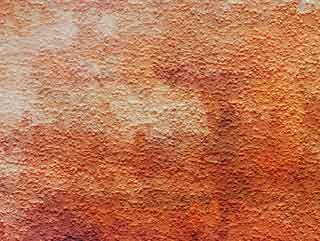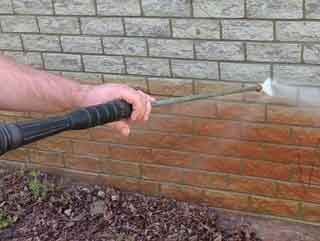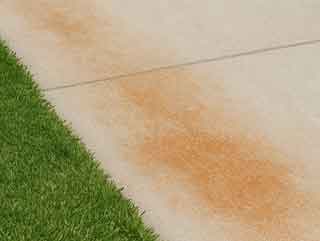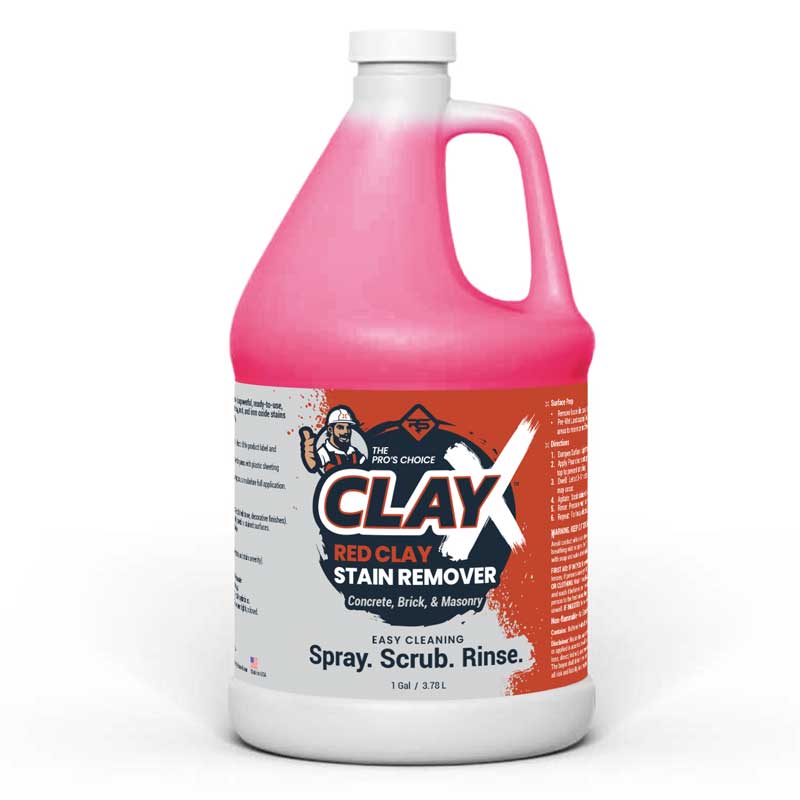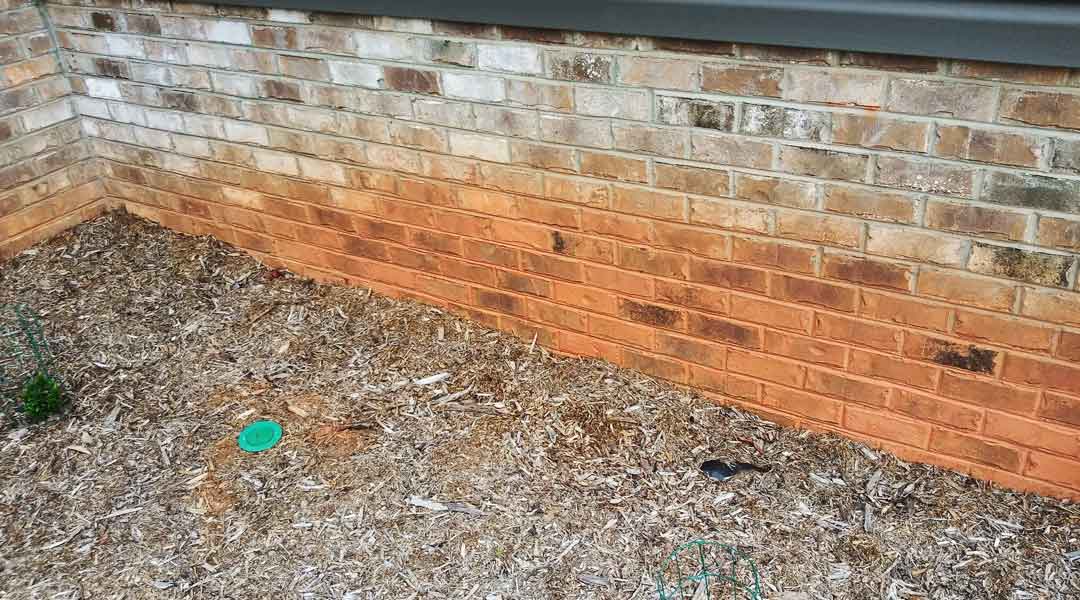
Why Red Clay Stains Are Easier to Prevent Than Remove
If you live in a red clay region, you know how hard it is to prevent red clay stains on concrete, brick, and masonry. Rain, irrigation, and runoff carry clay-rich soil across your surfaces, turning driveways and walls into rust-colored messes that are tough to clean and even harder to keep clean.
The good news? You don’t have to fight these stains over and over.
With the right concrete or masonry sealer, you can block red clay and iron oxide before they bond to your surfaces. Whether you’re protecting new construction or preserving a freshly cleaned surface, sealing is the smart, long-term solution.
💡 Did You Know?
Red clay soils—known as Ultisols—are widespread across the southeastern U.S. and are a leading cause of staining on masonry surfaces.
👉 View this U.S. soil map showing red clay rich areas
Why Red Clay Stains Are So Hard to Get Rid Of
Red clay isn’t just dirt—it’s loaded with iron oxide (Fe₂O₃), the same compound that causes rust. When rain or irrigation water carries this fine, iron-rich soil onto concrete, brick, or stone, the clay seeps deep into the pores. As it dries, the iron chemically bonds to the minerals in the surface, leaving behind stubborn, rust-colored stains.
Pressure washing and household cleaners usually can’t break those bonds. Even specialty cleaners, like Clay-X Red Clay Stain Remover, may require multiple applications for older or deeper stains. And if the surface isn’t sealed? Those stains are likely to come back after the next storm.
That’s why proactive sealing is so important—it stops red clay from soaking in and bonding in the first place. You’re not just cleaning stains; you’re blocking them from forming again.
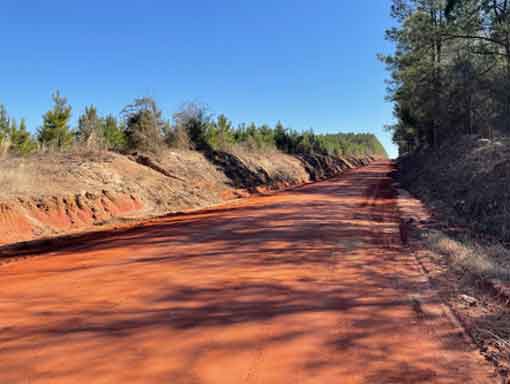
Red clay soil gets its distinctive color from the accumulation of iron oxides and is most prevalent in the Southeastern United States.
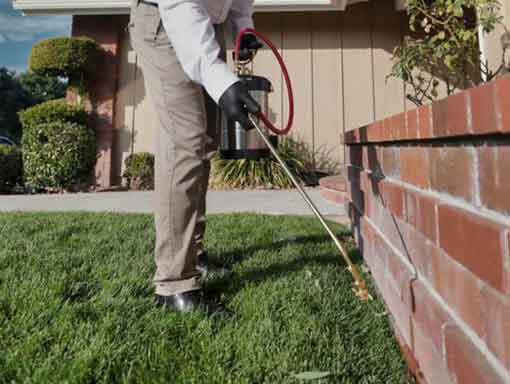
Applying a penetrating sealer fills the pores of the masonry, preventing red clay from being absorbed into the surface.
How Sealing Prevents Red Clay Stains
Sealing your concrete, brick, or masonry surface is like installing an invisible shield. A penetrating sealer soaks into the pores and creates a long-lasting barrier that blocks moisture, dirt, and red clay from absorbing into the surface. That means no more iron oxide working its way into your walls, walkways, or patios—and far fewer stains to worry about.
Without a sealer, every rainfall, sprinkler cycle, or landscaping project becomes an opportunity for red clay to stain the surface again. Even after deep cleaning, unsealed masonry can reabsorb red clay the next time it’s exposed to runoff or splash-back.
Sealing helps:
-
Prevent new stains from forming
-
Protect recent cleaning efforts so stains don’t return
-
Reduce maintenance and save time down the road
-
Preserve curb appeal on both residential and commercial properties
Whether you’ve just cleaned your driveway or you’re protecting new construction, sealing is a smart, proactive solution for anyone dealing with red clay soil.
Best Sealer to Prevent Red Clay Stains on Masonry
Not all sealers are created equal—especially when it comes to protecting against red clay stains. Many hardware store options are surface-level coatings that wear off quickly, trap moisture, or change the appearance of your concrete or brick. To truly prevent red clay stains, you need a deep-penetrating, breathable sealer.
One of the best options is LastiSeal Brick & Concrete Sealer. Unlike topical coatings, LastiSeal penetrates up to 4 inches deep, forming a permanent barrier inside the pores of the masonry. It doesn’t peel, flake, or create a slippery film—and it won’t alter the look of the surface.
Even better, LastiSeal outlasts most other sealers, especially surface coatings, with an impressive 15-year service life. That’s long-term peace of mind, whether you’re sealing after cleanup or protecting a new build.
Here’s what to look for in a red clay stain sealer:
-
🧱 Deep penetration into porous materials like concrete, brick, and stucco
-
💨 Breathability to allow moisture vapor to escape and prevent trapped water
-
🌧️ Water and soil repellency to block iron-rich runoff and clay splash-back
-
🎨 Natural finish with no shine, darkening, or surface film
Whether you’re sealing a new home or protecting freshly cleaned masonry, choosing the right sealer is critical to stopping red clay before it sets in.
LastiSeal • Flat
Buy Direct
Get It on Amazon
LastiSeal • Satin
Buy Direct
Get It on Amazon
How to Apply LastiSeal to Prevent Red Clay Stains
Applying a penetrating sealer like LastiSeal is a simple but crucial step to ensure your surfaces stay clean and stain-free—whether it’s a new construction or a freshly cleaned wall or driveway.
🧰 What You’ll Need:
-
LastiSeal Brick & Concrete Sealer
-
Low-pressure garden sprayer or roller
-
Painter’s tape (for masking nearby surfaces)
-
Protective gear (gloves, goggles)
-
Broom or blower for surface prep
🪜 Step-by-Step Instructions:
-
Clean the surface thoroughly.
Remove any dirt, clay, or debris. If you’re sealing after cleaning red clay stains, wait 2–3 days for the surface to dry fully. -
Make sure the surface is completely dry.
LastiSeal works best when the pores are open and dry. Avoid applying if rain is expected within 24 hours. -
Mask off nearby windows, plants, or delicate surfaces.
LastiSeal is safe but can bond to unintended areas if oversprayed. -
Apply LastiSeal using a sprayer or roller.
Work in 4–6 foot sections. Apply generously, allowing the product to soak in. A second coat may be needed for very porous surfaces. -
Let it penetrate and dry.
The surface will be dry to the touch within a couple of hours, but full curing takes 24–72 hours. Do not allow traffic or water during this time.
💡 Pro Tip: Apply in the morning or late afternoon to avoid hot, direct sun which can cause premature evaporation.
Clay-X Red Clay Stain Remover
Buy Direct
Final Thoughts: Seal It Once, Protect It for Years
Red clay stains are tough, but with the right sealer, you can prevent red clay stains before they start. Whether you’re sealing new construction or protecting a freshly cleaned surface, LastiSeal Brick & Concrete Sealer gives you a long-term defense against iron-rich red clay, water, and grime.
Unlike short-lived topical coatings, LastiSeal penetrates deep into masonry and cures inside the substrate, creating an invisible, breathable barrier that lasts up to 15 years. That means no flaking, no peeling—and no more constant scrubbing.
🛡️ One application can save you years of frustration and labor.
🧱 Works on driveways, walls, foundations, patios, and more.
💧 Stops red clay stains before they start.
👉 Shop LastiSeal Brick & Concrete Sealer now and protect your surfaces the smart way—before red clay has a chance to settle in.
❓ Frequently Asked Questions
1. How does sealing concrete or brick prevent red clay stains?
Sealing creates a water-repellent, breathable barrier inside the pores of concrete, brick, and other masonry. This barrier prevents iron-rich red clay and moisture from soaking in and forming stains. Without a sealer, these materials absorb runoff easily—leading to deep, rust-colored stains that are hard to remove.
2. How long does LastiSeal protect against red clay stains?
LastiSeal Brick & Concrete Sealer offers up to 15 years of protection with a single application. Unlike surface coatings that peel or wear off, LastiSeal penetrates deep into the masonry and cures internally—delivering long-term defense against water, dirt, and red clay soil.
3. Will LastiSeal change the appearance or color of the surface?
No. LastiSeal is a non-film-forming, natural-look sealer, so it doesn’t leave any shine, darkening, or surface residue. Your concrete, brick, or stone will retain its original appearance—just with invisible protection beneath the surface.
4. Can I apply LastiSeal on a newly built home or patio?
Yes! In fact, sealing new construction is one of the smartest ways to prevent red clay stains before they ever appear. Just make sure the surface is clean and fully dry before applying. Allow new concrete to cure for at least 28-days before sealing.
5. What surfaces can I seal to protect against red clay?
LastiSeal works on a wide variety of vertical and horizontal masonry surfaces, including driveways, patios, brick walls, foundations, stucco siding, concrete block, and stone veneer. As long as the surface is porous, LastiSeal can seal it. It’s suitable for both residential and commercial properties.
